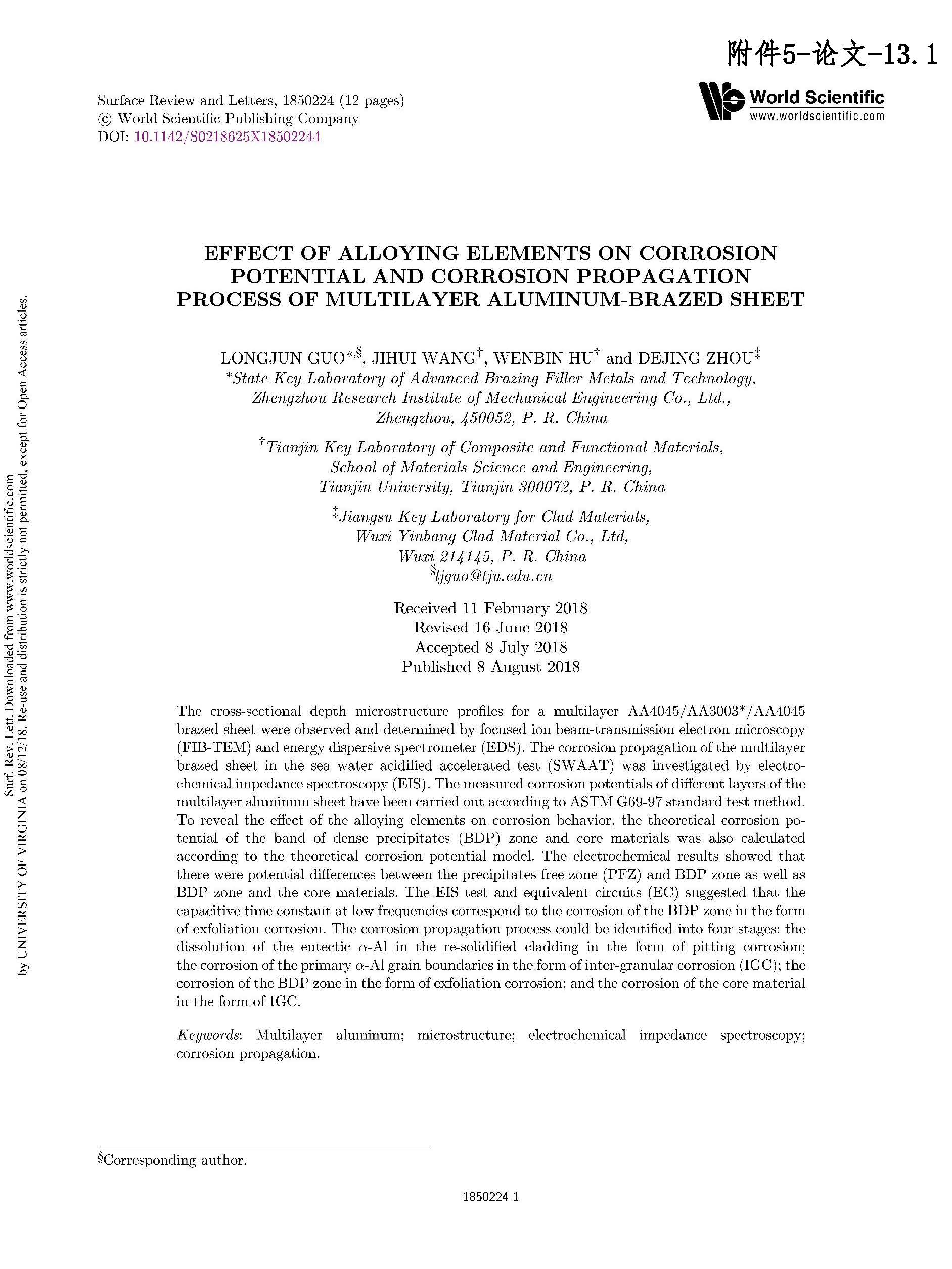The cross-sectional depth microstructure profiles for a multilayer AA4045/AA3003*/AA4045 brazed sheet were observed and determined by focused ion beam-transmission electron microscopy (FIB-TEM) and energy dispersive spectrometer (EDS). The corrosion propagation of the multilayer brazed sheet in the sea water acidified accelerated test (SWAAT) was investigated by electrochemical impedance spectroscopy (EIS). The measured corrosion potentials of different layers of the multilayer aluminum sheet have been carried out according to ASTM G69-97 standard test method. To reveal the effect of the alloying elements on corrosion behavior, the theoretical corrosion potential of the band of dense precipitates (BDP) zone and core materials was also calculated according to the theoretical corrosion potential model. The electrochemical results showed that there were potential differences between the precipitates free zone (PFZ) and BDP zone as well as BDP zone and the core materials. The EIS test and equivalent circuits (EC) suggested that the capacitive time constant at low frequencies correspond to the corrosion of the BDP zone in the form of exfoliation corrosion. The corrosion propagation process could be identified into four stages: the dissolution of the eutectic alpha-Al in the re-solidified cladding in the form of pitting corrosion; the corrosion of the primary alpha-Al grain boundaries in the form of inter-granular corrosion (IGC); the corrosion of the BDP zone in the form of exfoliation corrosion; and the corrosion of the core material in the form of IGC.
